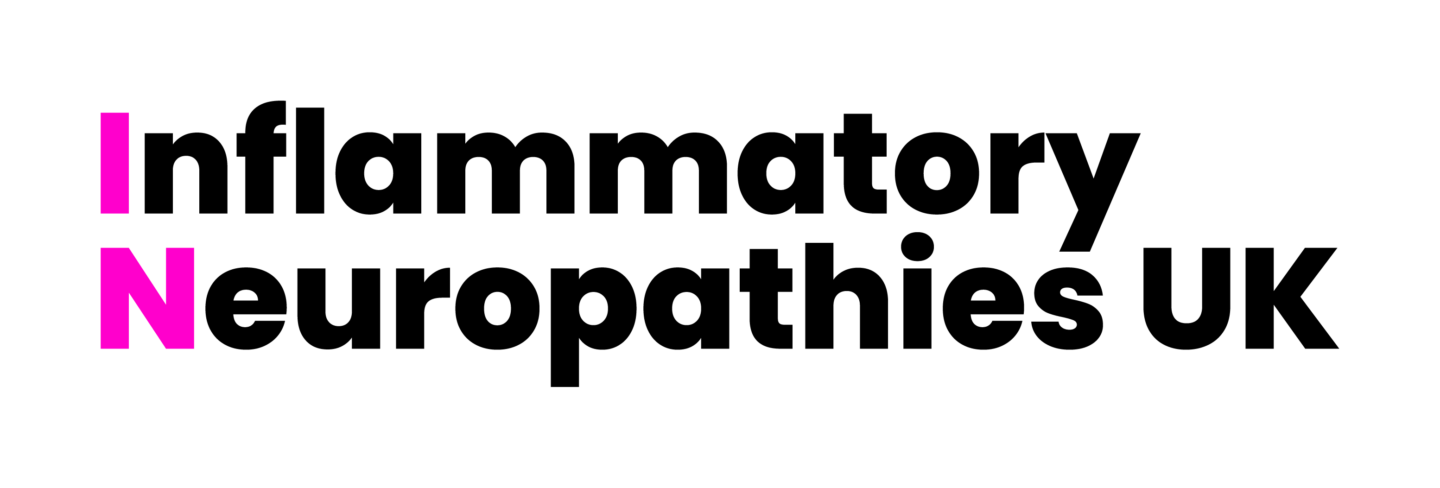Treatment
The treatments with clinically proven efficacy in CIDP are immunoglobulin, steroids, and plasma exchange, all of which have been shown to be superior to placebo in clinical trials. In other studies, they have been shown to be equivalent to one another in efficacy: between 50 and 80% of patients respond to each of the treatments. Failure to respond to one treatment does not mean that the other treatments won’t work either (unless the diagnosis if wrong). 15% of patients do not respond to any of the three treatments.
Immunoglobulin
The most commonly used treatment, particularly for motor dominant CIDP, is intravenous immunoglobulin (IVIg). Immunoglobulin is made from donated blood that contains healthy antibodies which can help stop the harmful antibodies damaging your nerves. If it works there will be a quick response in a matter of weeks, with improvement in strength and function. Some patients (15-30%) only need a single course.
IVIg is given in hospital and if it needs to be given long term by regular infusion typically every 6 weeks. This can have an impact on the patient’s work, travel plans, or ability to look after family members, as their infusions need to be fitted around these factors.
In some parts of the country it is possible to receive subcutaneous immunoglobulin (also known as SCIg or SubCut) at home which is more convenient for patients. With SCIg, immunoglobulin is delivered by a needle into the fatty tissues under the skin, where it enters the circulation slowly over a few days. There isn’t much room under the skin, so the dose of immunoglobulin given is smaller than with IVIg. For this reason, SCIg is usually given every week. Nearly everybody on SCIg learns how to have treatment at home, with each session lasting up to about two hours.
As with all treatments, side effects can occur with IVIg, although usually these are minimal and do not require the treatment to be stopped. It is helpful if you drink plenty of fluid whilst you are receiving IVIg. Transient side effects, which often respond to changes in the rate of administration of the infusion, include headache and low blood pressure and occasionally, a rash can develop. Severe complications from IVIg use are very rare. IVIg thickens the blood slightly so particular consideration of its use is given to patients with kidney failure, previous heart disease, stroke or blood clots.
Plasma Exchange (plasmapheresis)
Plasma exchange, also called plasmapheresis, is sometimes used instead of IVIg. This involves being attached to a machine that removes blood from a vein and filters out the harmful antibodies that are attacking your Plasma exchange involves having the patient attached to a machine to remove some of their blood and replace with other blood product (eg human albumin), over 5 days. PE should be considered in preference to IVIg in cases of non-motor dominant CIDP.
Corticosteroids
Corticosteroids should also be considered in preference to IVIg in cases of non-motor dominant CIDP. Corticosteroids are easy to administer either as daily or alternate daily treatments, or monthly oral or intravenous regimes. In older patients, there are often competing medical conditions which mean that they need to be used with caution or avoided altogether e.g. if a patient has poorly controlled diabetes or osteoporosis, or if they have recurrent chest infections and immunosuppression might put them at risk of overwhelming infection. A younger patient may have fewer comorbidities but would also potentially be facing longer term treatment.
If a patient needs very frequent IVIg infusions then a neurologist might consider adding in a steroid or another immunosuppressant agent, and if IVIg does not offer clear benefits, then steroids are the obvious next treatment option. There is a difference in cost between the treatment options, with both IVIg and plasma exchange costing thousands of pounds per course whilst steroids are relatively cheap, but this is not a deciding factor in which treatment is provided.
Is There A Cure For CIDP?
It depends how you define ‘cure’, but in CIDP literature this has been defined as ‘remission of over 5 years off treatment’, which has been reported in about 25% of patients treated with steroids for less than one year. Neurologists would more usually use the term ‘remission’ in CIDP (i.e. stability without treatment). Shorter term remission is more common than ‘cure’: there is evidence from studies that up to 40% of patients with CIDP may be in remission after one year of treatment with either steroids or IVIg. It is for this reason that it is advised that the need for treatment is reviewed on an annual basis if patients are no longer showing any or little fluctuation in their clinical symptoms. Although many people remain free of symptoms following remission, there is no guarantee that there will be no further relapse in the future. 15% of patients do not respond to any of the three treatments.
Welcome to our CIDP Information Hub.
Here we breakdown what is happening to you or a loved in simple but proper terms. Our information is sourced from our Medical Advisory Board, medical texts, and recognised support providers.
If you have any questions after reading this that you feel haven’t been answered. Please get in touch with us, we will strive to point you in the right direction.
What is CIDP?
We discuss the basics of GBS – what it is, the symptoms, and information on Acute onset CIDP (A-CIDP)
How is CIDP Treated?
We cover Immunoglobulin, Plasma Exchange, Corticosteroids, and is there a “cure”?
What Family & Friends Can Do To Help if Someone is in Hospital?
We cover communication, Mental Stimulation, Financial Worries, Comfort, Coming off a Ventilator, and Staying Positive
What is the advice surrounding vaccinations and CIDP?
Containing information on vaccinations via our Medical Advisory Board and sourced journals.
Mental Health & Wellbeing, Relationships, and Carer Support
Contains information on how to care for your mental health. We also discuss relationships, before a section on looking after yourself as a carer
What Are The Causes of CIDP?
How will I get diagnosed by my Doctor, Nerve Tests, and Lumbar Punctures
Returning to Work
When someone is ready to return to work after an absence, the employer should have a procedure they follow.
You can check your workplace’s absence policy for this. Your workplace might have a policy for meeting with employees after absences.











